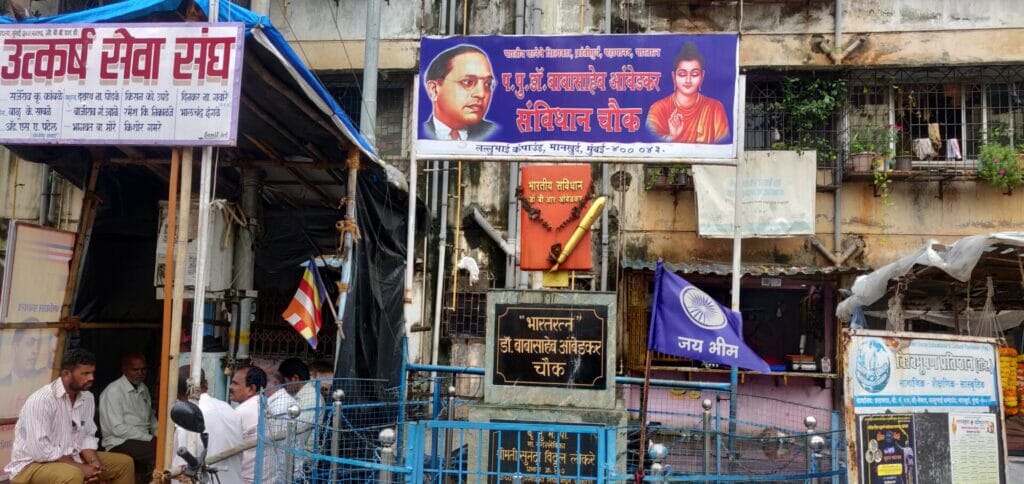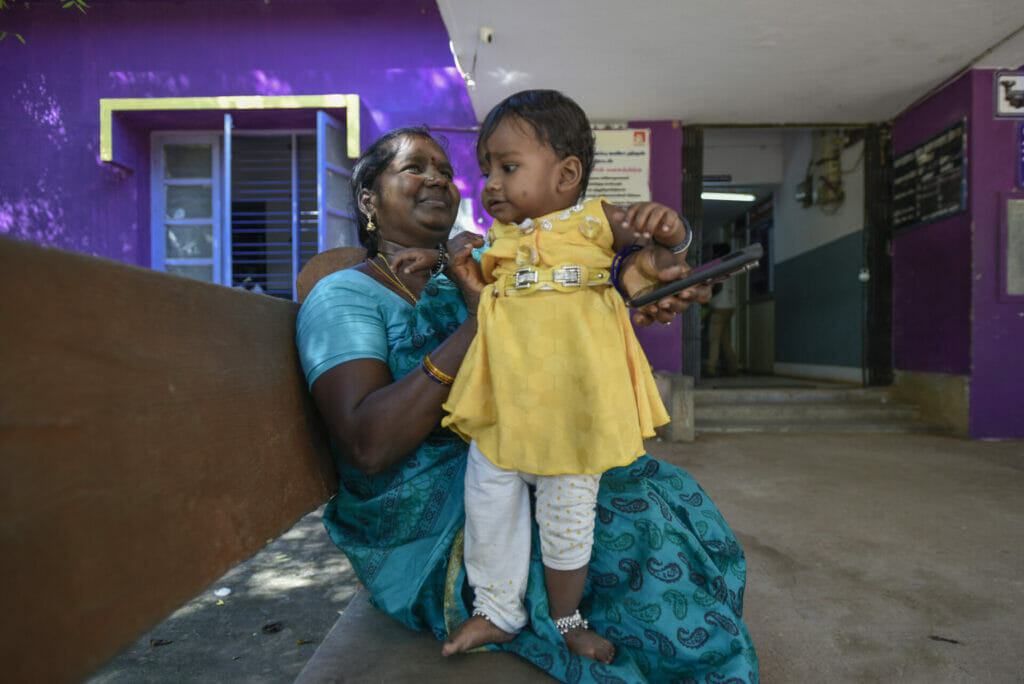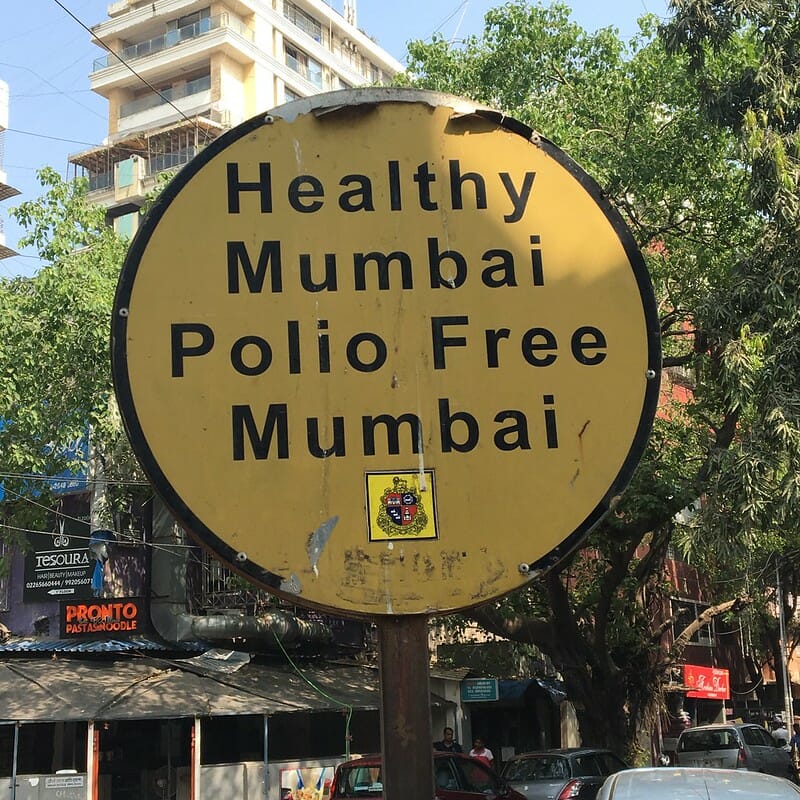When one asks about the recent incident where three children in Mumbai’s Rafi Nagar lost their lives to a measles outbreak, the common response from residents in the area is: What is measles? The disease is either known by its local name gobri or is commonly confused with chicken pox.
What is measles, really?
A measles rash is flat and is accompanied with high grade fever along with runny nose, sore throat, cough, and even conjunctivitis. The symptoms can last for several weeks. On the other hand, chicken pox comes with raised bumps, low grade fever and symptoms generally last for one week.
Chicken pox and measles are highly contagious vaccine-preventable diseases. As measles are more fatal, only the measles vaccine is included in the national immunisation schedule. Children younger than 5 years of age are most at-risk of measles, and the vaccine for the disease comes in two doses. The first dose is administered to a child in the ninth month and the second dose is administered in the 15th month.
Almost a month after the death of her two children, Sahrunissa Khan is tired of explaining to everyone that she had vaccinated her 5-year-old Hasnain and 2-and-half-years old Noorain. “At least one dose was completed.”
However, she doesn’t know what the vaccine was for. “I lost the (immunisation) document in a demolition drive. They should have told us which vaccine is being administered to the child.” The third child who died was Hasnain and Noorain’s cousin.
Missed doses and measles outbreak
The measles vaccine has been around since the mid-80s in India. According to the Maharashtra State Health Department’s latest survey, more than 1.72 lakh children missed their measles vaccine in the five-year period till September.
In Mumbai, in the last five years, 9,549 children missed their first dose of the measles vaccine while 10,345 missed their second dose. Dr Mukesh Agarwal, who earlier headed KEM hospital’s paediatrics department, explains these numbers largely reflect the years 2020 and 2021.
“After the COVID-19 pandemic, the coverage for measles vaccine went down. The cases that we see today are mostly in children upto the age of 2, meaning the ones who are born between 2020 and 2022,” he says.
While measles did occur in the earlier years as well, the cases were never as high as they are today. “Every year there were a few intermittent cases but this time there are a cluster of cases in different areas, which is why they are calling it a measles outbreak this time,” he says.
After the initial measles outbreak in Rafi Nagar, which falls in the city’s M-east ward, there have been cases detected in M-West ward, E ward, F-North ward, G-North ward, P-North ward, and H-east ward.
Read more: Mumbai NGOs release manifesto to transform public health – will parties listen?
8-month-old Zoya’s mother Nasreen Bano says it is only after the death of three in Sahrunissa’s home that the BMC health department officials are actively asking about measles in the area. “There was not much halla by officials over measles here earlier. They used to inform us about vaccination camps but nobody ever told people here what the vaccine was for until now,” Nasreen claims.
There have been eight more deaths reported due to measles, taking the total to 11. The number is increasing as more and more cases come to light. More than 150 are admitted in Mumbai’s civic hospitals for confirmed measles while a little over 1,000 are under observation for suspected measles.
Impact of deprivation on measles outbreak
The inoculation either happens at special vaccination camps set up by the civic body with the help of community leaders and NGOs or one can get their child vaccinated at a nearest health post. The health officials provide a detailed card after the inoculation.
A 2021 report found that 100% of those surveyed in multiple slum pockets of M-east ward had received a child immunisation card. The report concluded that the children in those slum pockets appeared to be on track with their immunisations.
However, many like Nasreen do not have the literacy levels to read the immunisaiton card. In 2011, the population of M-east was a little over 80 lakhs, 27% of which were found to be illiterate. The number of women who lacked required literacy levels were higher than men.

Then there are also those like Sahrunissa who can only read and write Urdu. “I can’t read Hindi very well. Even then I used to try and read the card or ask around which vaccine has been given and for what disease.” But the officials rarely addressed her queries, she claims.
With 85% of its population living in slums, M-east is considered as the poorest amongst the total 24 wards under the Brihanmumbai Municipal Corporation (BMC).
Read more: Why are citizens opposing the city’s biomedical waste treatment plant?

“They don’t tell us which vaccine they are giving, they only write it on the paper and give us a card,” says Zoya’s father, 40-year-old Mohammed Kalim. He used to be a vegetable vendor until Zoya got infected with measles about a week ago. She had to be looked after so Kalim stopped setting up his onion and potato cart. He and Nasreen now manage their expenses on borrowed money.
Dr Agarwal warns that the combination of measles and poverty can be fatal as the risk of potential complications is higher. “Measles is a self limiting illness (not requiring treatment) but the complications are very serious. The immunity remains low for the next two to three months after measles, and it can prove fatal if the child is already malnourished. Such cases get severe pneumonia, that is how most are dying in the current outbreak.”
Vaccination camps can be more informative
Soni Devi Pasi, who works with Apnalaya, a local NGO, that helps facilitate access to health, education, and livelihoods amongst slum-dwellers, says its volunteers coordinate with anganwadi workers as well as community health workers (CHWs) in the area to survey children in the age group of 0 to 6. “We monitor immunisation amongst children, their hygiene levels, and their nutritional levels on a day-to-day basis.”
One of the problems is that CHWs only tell the families that there needs to be an injection given to the child after one and a half months, two and a half months, after nine months, and after 16 months. “A lot of residents do not know what these injections are for.”
Read more: How community health workers conduct annual TB, leprosy survey
Meanwhile, BMC’s deputy executive health official Dr Daksha Shah, says women are counselled at maternity homes and told about immunisation right from the time of their pregnancy. “We don’t miss this. Maternity home sisters are so active that while explaining to pregnant women about breastfeeding, they are also informed about the child’s vaccination schedules.”

The BMC officials frequently conduct vaccination drives in the M-east slums. The civic body also sets up vaccination camps at Apnalaya centres two or three times a month. During these camps, it is the responsibility of the NGO to mobilise the residents. Soni claims there were no vaccination camps held during the first lockdown. They resumed during the second lockdown, she says.
“No additional information is provided by the health officials to the families about what the vaccines are for and neither are they told about other common diseases and preventive practices.”
However, Dr Shah asserts that the centres provide all the necessary information to the parents but they may be missing it a few times because of the large crowd. “There are group as well as individual counselling sessions on family planning held at vaccination camps.”
Need for mass media campaigns
Notably, even though the residents were not as aware of the disease for which vaccines are inoculated, everybody knew about polio and the polio vaccine. India has an age-old Universal Immunisation Programme that covers twelve vaccine-preventable diseases. The programme caters to about 2.67 crore newborns and 2.9 crore pregnant women annually.
Soni says, “Apart from polio, not many know what other vaccines are for. That’s because the public service announcements featuring Amitabh Bachchan have helped raise awareness of Polio. Vaccinations for other diseases are not advertised as much.”
The large-scale televised campaign for the polio vaccine was carried out by the Government of India in the early 2000s. It gained mass popularity and its catchline do boond zindagi ke resonates amongst the masses even today.

An official from BMC’s health department says such large-scale awareness campaigns on television for other vaccines are beyond the reach of civic bodies and need to be carried out by the Centre.
“Health departments under local bodies would have to pay a large sum from their budget to put awareness campaigns on television, this may not be ideal.”
“Instead, BMC’s health department deploys monetary resources towards hoardings, banners, posters, pamphlets and jingles.” In July, the Ministry of Health claimed that as per data received by the centre from states and union territories, a total of 315 districts have achieved 90 per cent full immunisation coverage.
Outbreak of misinformation
“Up to a certain level, vaccine hesitancy was always there not just for the measles vaccine but for all of them. It is not a new thing,” says Dr Agarwal. Despite that, the immunisation campaigns of earlier years were successful but the pandemic took as two steps back, he says.
To make matters worse, misinformation during this measles outbreak continues to persist amongst slum-dwellers. “They believe it is Devi,” Soni says. Some even take their child to religious places after a disease like measles appears or turn towards other alternative medicines.
As long as it isn’t harming the child, the volunteers ask the families to continue doing what they believe in but are told to do it while they continue to consult a medical professional. A similar protocol is followed by BMC’s health workers as well as the CHWs and anganwadi workers under it. “Sometimes there is a knowledge gap and superstitions are tough to handle, the behaviour change cannot happen overnight as the roots are much deeper,” Dr Shah says.
The civic body is likely to train Community-Based Organisations (CBOs) to tackle problems like superstition and misinformation. “The CBOs and NGOs that are already active within the community will be trained by the BMC to address problems like superstition through effective communication.”
For Dr Agarwal, the lesson authorities as well as the public need to learn from the measles outbreak is to never fall behind on the immunisation schedule, and the need for better nutritional levels in slums.
Meanwhile, Sahrunissa now tells the story of how she lost her two children to measles to every parent she comes across and reminds them to vaccinate their children against the disease.